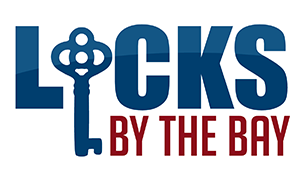I frequently get asked: “You cut keys by VIN?” My response typically goes something along the lines of: “Well, yes, but there are easier and less expensive ways of making you a key, are you sure you want to do it by VIN?” This generally begins the conversation of how they have lost the key, and what they believe to be the easiest way to get a replacement. As with many things, though, the key making environment has changed.

“Back in the day” before modern transponder systems, all you needed to start a car was a correctly cut brass key. So, if you lost your key, all you had to do was go back to the dealer, tell them the VIN of your vehicle, and get your new, working key. Thieves rather quickly figured this out as well. True or not, one story that is embedded in automotive folklore is thieves were able to get the VIN from the car on the lot, go to the service desk and get a key, then drive off with their new car. The story is certainly plausible and has been repeated so much that I have to believe it is true. Regardless, cutting keys by VIN quickly became more and more problematic. Dealers adapted and began demanding proof of ownership before they would provide a key.
No Longer Just a Key

This continued up through the late 1990’s when modern transponder systems were introduced. After this, there were two components required for a car to start. The first was the same as always, the brass key had to be cut in order to turn the door and ignition. The second was a small “chip” embedded in the head of the key. The car had to be programmed to recognize this new chip. If the car was equipped with this technology, owners were faced with having to have a car towed to the dealer as the car had to be physically present for the car to be programmed to accept the new key. The dealership was expensive, towing was expensive, and waiting your turn for the car to be repaired was a hassle. Enterprising locksmiths figured this out and began to develop ways to determine the cuts of the keys and program these vehicles.
Making a Brass Key.
The oldest method of obtaining the cuts of the key is to get it from the vehicle. Some manufacturers will stamp the “key code” on locks of the vehicle. The locksmith needs to know the location and how to remove the lock. The code can be decoded by software to make the key. If a code isn’t stamped on any locks, then a lock can be removed from the vehicle and disassembled to determine the cuts of the key. Both of these methods are still valid for some of the most modern vehicles on the road today.
Some vehicles, however, do not have a key code readily available, or removing a lock to disassemble can be daunting on many newer vehicles. For these, methods were developed to “read” the lock without removal. Frequently, the door lock is read, and with a little knowledge and expertise, a key that turns the ignition can be produced.
Programming The Key

Once the metal key is produced, the key has to be “programmed.” The term programming the key is actually a little mis-leading. For most vehicles, the chip in the key isn’t changed. The car itself has to be changed to take the new key. The locksmith is programming the car to take the new key. To do this, a programmer is hooked to the vehicle to instruct it to accept the new key.
It’s worthy of noting to say that while many newer vehicles use a transponder key, there are a number of vehicles currently in production that do not use transponder keys.
You Cut Keys By VIN?
The simple answer to the question is yes. However, there are two major nuances to that answer. The first is that purchasing the key code by VIN costs the locksmith or dealer money, so expect to pay more. The second, and perhaps most importance nuance is that that in most cases, this new brass key will not start your vehicle. Originating and programming a new key to your vehicle requires the skill and expertise of a qualified locksmith.
